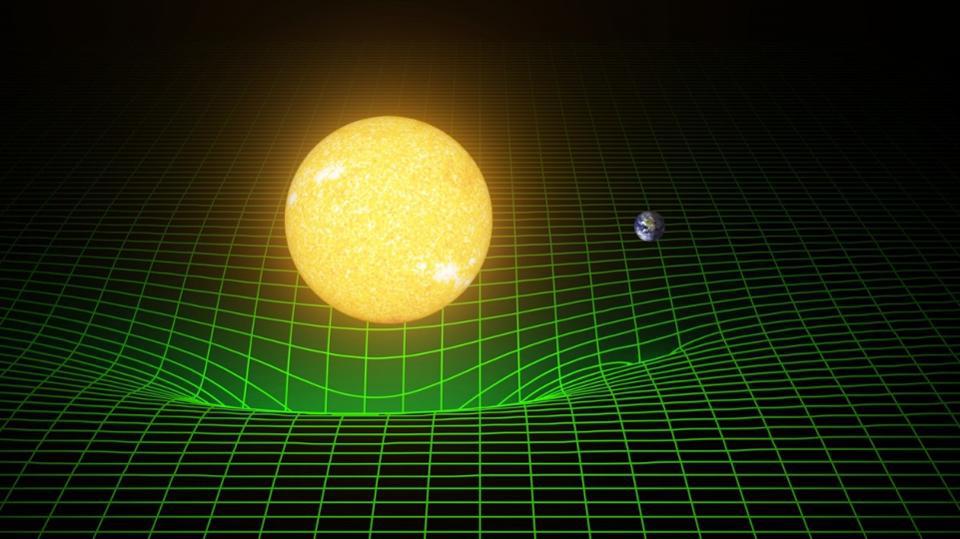We used to think the Big Bang meant the universe began from a singularity. Nearly 100 years later, we're not so sure.
Our entire cosmic history is theoretically well-understood, but only because we understand the theory of gravitation that underlies it, and because we know the Universe’s present expansion rate and energy composition. Light will always continue to propagate through this expanding Universe, and we will continue to receive that light arbitrarily far into the future, but it will be limited in time as far as what reaches us. We will need to probe to fainter brightnesses and longer wavelengths to continue to see the objects presently visible, but those are technological, not physical, limitations. (Credit: Nicole Rager Fuller/National Science Foundation)
- The Big Bang teaches us that our expanding, cooling universe used to be younger, denser, and hotter in the past.
- However, extrapolating all the way back to a singularity leads to predictions that disagree with what we observe.
- Instead, cosmic inflation preceded and set up the Big Bang, changing our cosmic origin story forever.
Where did all this come from? In every direction we care to observe, we find stars, galaxies, clouds of gas and dust, tenuous plasmas, and radiation spanning the gamut of wavelengths: from radio to infrared to visible light to gamma rays. No matter where or how we look at the universe, it’s full of matter and energy absolutely everywhere and at all times. And yet, it’s only natural to assume that it all came from somewhere. If you want to know the answer to the biggest question of all — the question of our cosmic origins — you have to pose the question to the universe itself, and listen to what it tells you.
Today, the universe as we see it is expanding, rarifying (getting less dense), and cooling. Although it’s tempting to simply extrapolate forward in time, when things will be even larger, less dense, and cooler, the laws of physics allow us to extrapolate backward just as easily. Long ago, the universe was smaller, denser, and hotter. How far back can we take this extrapolation? Mathematically, it’s tempting to go as far as possible: all the way back to infinitesimal sizes and infinite densities and temperatures, or what we know as a singularity. This idea, of a singular beginning to space, time, and the universe, was long known as the Big Bang.
But physically, when we looked closely enough, we
found that the universe told a different story. Here’s how we know the
Big Bang isn’t the beginning of the universe anymore.
Countless scientific tests of Einstein’s general theory of relativity have been performed, subjecting the idea to some of the most stringent constraints ever obtained by humanity. Einstein’s first solution was for the weak-field limit around a single mass, like the Sun; he applied these results to our Solar System with dramatic success. Very quickly, a handful of exact solutions were found thereafter. (Credit: LIGO scientific collaboration, T. Pyle, Caltech/MIT)
Like most stories in science, the origin of the Big Bang has its roots in both theoretical and experimental/observational realms. On the theory side, Einstein put forth his general theory of relativity in 1915: a novel theory of gravity that sought to overthrow Newton’s theory of universal gravitation. Although Einstein’s theory was far more intricate and complicated, it wasn’t long before the first exact solutions were found.
- In 1916, Karl Schwarzschild found the solution for a pointlike mass, which describes a nonrotating black hole.
- In 1917, Willem de Sitter found the solution for an empty universe with a cosmological constant, which describes an exponentially expanding universe.
- From 1916 to 1921, the Reissner-Nordström solution, found independently by four researchers, described the spacetime for a charged, spherically symmetric mass.
- In 1921, Edward Kasner found a solution that described a matter-and-radiation-free universe that’s anisotropic: different in different directions.
- In 1922, Alexander Friedmann discovered the solution for an isotropic (same in all directions) and homogeneous (same at all locations) universe, where any and all types of energy, including matter and radiation, were present.
- An illustration of our cosmic history, from the Big Bang until the present, within the context of the expanding universe. The first Friedmann equation describes all of these epochs, from inflation to the Big Bang to the present and far into the future, perfectly accurately, even today. (Credit: NASA/WMAP science team)

Δεν υπάρχουν σχόλια:
Δημοσίευση σχολίου
Το blog TEO O ΜΑΣΤΟΡΑΣ ουδεμία ευθύνη εκ του νόμου φέρει σχετικά σε άρθρα που αναδημοσιεύονται από διάφορα ιστολόγια. Δημοσιεύονται όλα για την δική σας ενημέρωση.